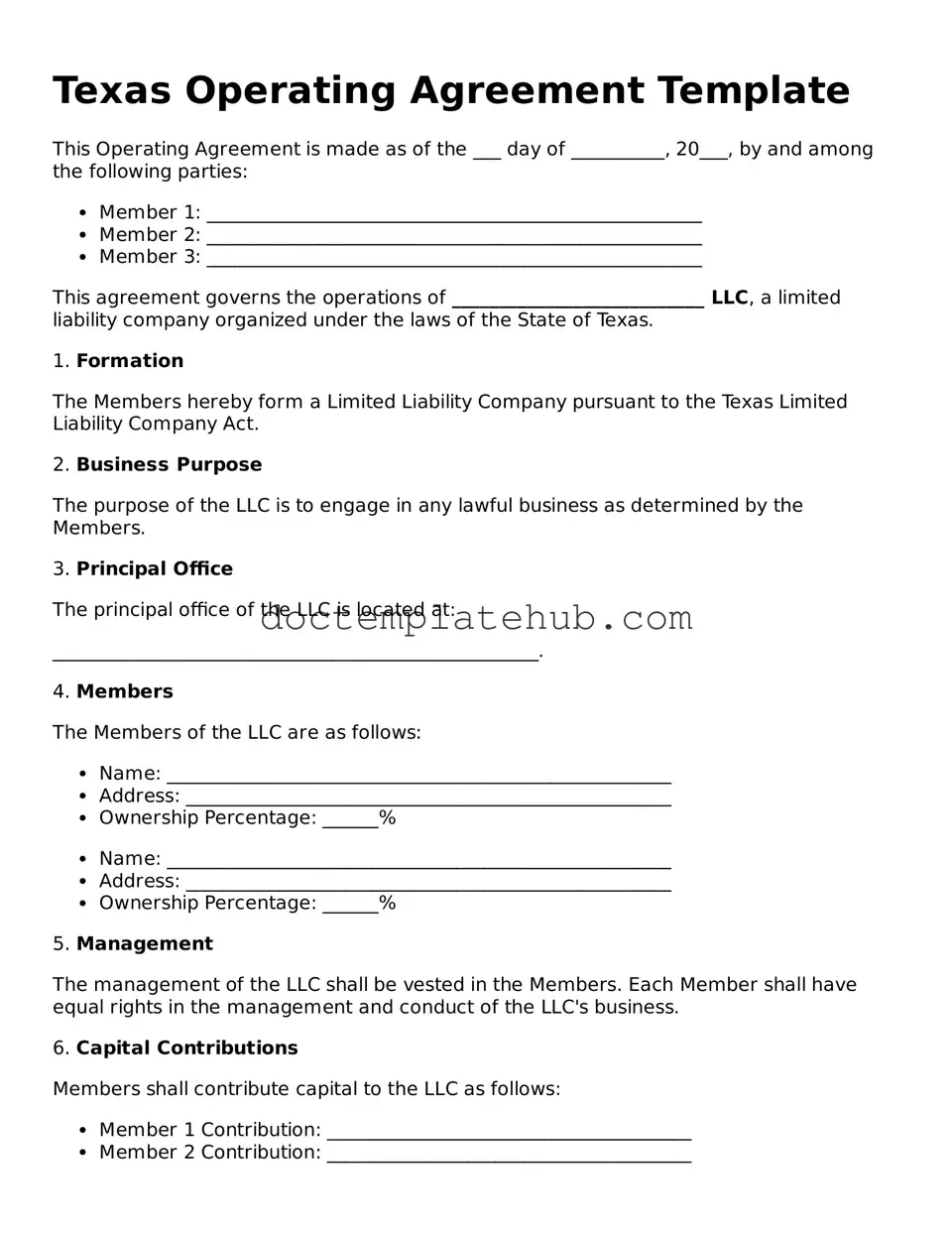What is a Texas Operating Agreement?
A Texas Operating Agreement is a legal document that outlines the ownership and operating procedures of a limited liability company (LLC) in Texas. It serves as a guideline for how the LLC will be run, detailing the roles of members, management structure, and financial arrangements.
Why do I need an Operating Agreement for my LLC?
Having an Operating Agreement is important because it helps to clarify the rights and responsibilities of each member. It can also protect your personal assets by reinforcing the limited liability status of the LLC. Additionally, if disputes arise, this document can provide a clear framework for resolution.
Is an Operating Agreement required in Texas?
While Texas law does not require LLCs to have an Operating Agreement, it is highly recommended. Without one, the LLC will be governed by default state laws, which may not reflect the specific needs or intentions of the members.
What should be included in a Texas Operating Agreement?
Key elements to include are the names of the members, their ownership percentages, management structure, voting rights, profit distribution, and procedures for adding or removing members. It’s also wise to outline how disputes will be handled and what happens if the LLC is dissolved.
Can I change my Operating Agreement later?
Yes, you can modify your Operating Agreement at any time, as long as all members agree to the changes. It’s a good practice to keep a record of any amendments to ensure everyone is on the same page.
How do I create a Texas Operating Agreement?
You can create an Operating Agreement by drafting it yourself or using templates available online. However, consulting with a legal professional is often beneficial to ensure that it meets all legal requirements and adequately protects your interests.
Do I need to file the Operating Agreement with the state?
No, you do not need to file your Operating Agreement with the state of Texas. It should be kept in your business records and made available to all members. However, it’s important to have it accessible in case it’s needed for reference or legal matters.
How does an Operating Agreement affect taxes?
An Operating Agreement itself does not directly affect taxes. However, it can influence how profits and losses are distributed among members, which may have tax implications. It's advisable to consult with a tax professional to understand how your Operating Agreement can impact your tax situation.
